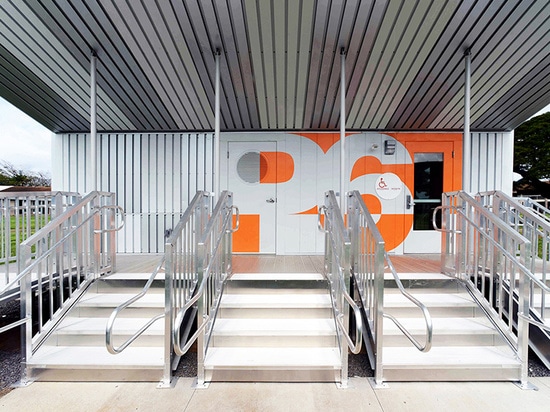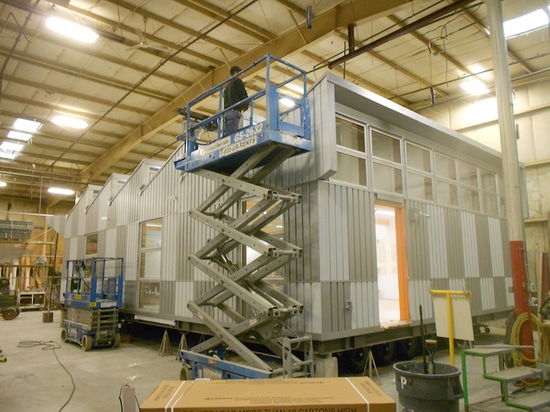
#PUBLIC ARCHITECTURE PROJECTS
Energy-positive portable classroom produces four times more energy than it needs
San Francisco-based Anderson Anderson Architecture recently completed a prototype for an energy-positive relocatable classroom in Ewa Beach, Hawaii that can produce four times more energy than it needs.
The solar-powered modular classroom prototype was developed as part of the Aloha State’s plans to replace 10,000 portable classrooms over the next 10 years—currently a quarter of Hawaiian students study in poor-quality, energy-inefficient portable units. The energy-positive prototype offers an optimized educational environment and is designed to maximize energy conservation while producing electricity and water.
Prefabricated off-site as three modules, the 960-square-foot portable classroom is topped with a distinctive sawtooth roof that uses north-facing windows to optimize ventilation and natural daylight to the interior. The solar panels that clad the roof offer shade to reduce solar heat gain. All windows are operable to maximize natural ventilation. The interior includes low VOC materials, natural finishes, and FSC-certified timber structures. Analysis modeling for a thirty-year lifecycle projects that the costs for this high-performance prototype will be lower than the conventional energy-consuming portables.
“The manufacturing and delivery process, and the materials and products employed are all selected for minimum environmental impact and for maximum contribution to a healthy indoor environment,” write the architects. “Wherever possible, materials are chosen to conserve resources, minimize initial and lifecycle maintenance costs, and to promote educational awareness of the natural environment and its relationship to comfortable and healthy living. The design focuses on performance issues directly impacting the learning experience of its occupants and the environmental quality of its community—thermal comfort, natural daylighting, indoor air quality, energy and resource conservation and generation.”
The energy-positive classroom includes extensive environmental monitoring systems that broadcast building performance data to the web, which will be studied by a scientific team for evaluation over a two-year period. The building and performance data will also be used as learning tools for the students, other schools, and the general public. Occupancy sensors will contribute to energy conservation by “learning” patterns of activity, such as automatically turning off the lights when occupants leave the space.





